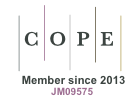Nutritive value of tomatillo fruit (Physalis ixocarpa Brot.)
Joanna Ostrzycka, Marcin Horbowicz, Włodzimierz Dobrzański, Leszek S. Jankiewicz, Jan Borkowski
Abstract
Tomatillo is widely cultivated in Mexico but is little known in other countries. The chemical composition of fruit from field grown plants was investigated during several vegetative seasons. Tomatillo contained a relatively high percentage of dry matter (7-10%) and extract (6.6-7.4%). Its potassium content was lower than that of tomato growing in the same conditions. The content of iron was higher, and that of other elements was comparable, depending on the conditions during the given year. The total sugar content amounted to 2.8-5.7%, depending on the selected population. The percentage of glucose and fructose decreased during ripening and that of saccharose increased. The content of pectic substances was similar as in tomato but the proportions of particular fractions was different. Tomatillo contained more acids than tomato, and showed an especially high citric and malic acid content. The latter decreased drastically during ripening. The content of oxalic acid was 11-18 mg 100 g-1 in ripe fruit and up to 54 mg in unripe. The vitamin C content depended on the selected population and amounted to 8-21 mg 100 g-1, dehydroascorbic acid prevailing. The content of vitamin PP was 0.8-1.3 mg 100 g-1.
Keywords
mineral salts; sugars; acids; pectic substances; vitamin C; vitamin PP; ripening; chemical composition
DOI:
https://doi.org/10.5586/asbp.1988.049
Journal ISSN:- 2083-9480 (online)
- 0001-6977 (print; ceased since 2016)
| | This is an Open Access journal, which distributes its content under the terms of the Creative Commons Attribution License, which permits redistribution, commercial and non-commercial, provided that the content is properly cited. | |
| | |







